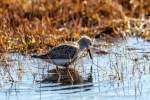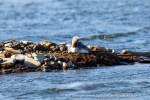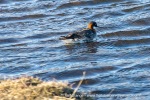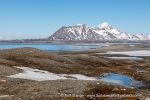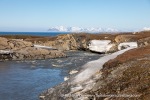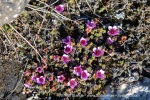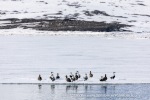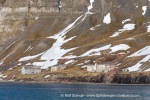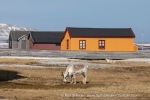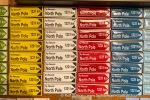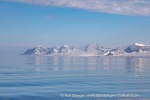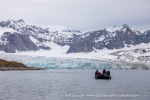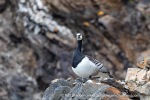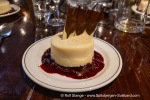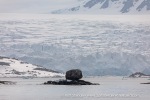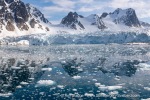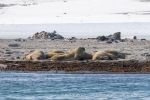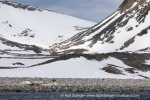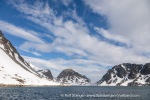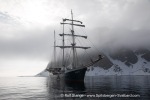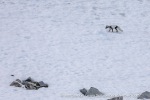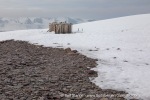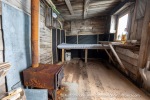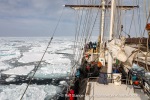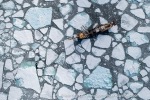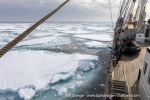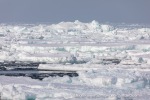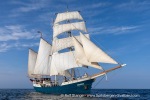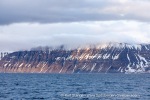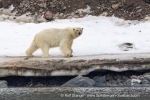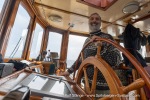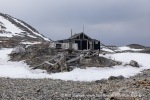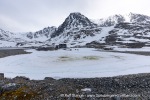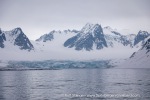-
current
recommendations- Liefdefjord
New page dedicated to one of Spitsbergen's most beautiful fjords. Background information and many photos.
- New Spitsbergen guidebook
The new edition of my Spitsbergen guidebook is out and available now!
- Liefdefjord
New page dedicated to one of Spitsbergen's most beautiful fjords. Background information and many photos.
Page Structure
-
Spitsbergen-News
- Select Month
- June 2025
- May 2025
- April 2025
- March 2025
- February 2025
- January 2025
- December 2024
- November 2024
- October 2024
- September 2024
- August 2024
- July 2024
- June 2024
- May 2024
- April 2024
- March 2024
- February 2024
- January 2024
- December 2023
- November 2023
- October 2023
- September 2023
- August 2023
- July 2023
- June 2023
- May 2023
- April 2023
- March 2023
- February 2023
- January 2023
- December 2022
- November 2022
- October 2022
- September 2022
- August 2022
- July 2022
- June 2022
- May 2022
- April 2022
- March 2022
- February 2022
- January 2022
- December 2021
- November 2021
- October 2021
- September 2021
- August 2021
- July 2021
- June 2021
- May 2021
- April 2021
- March 2021
- February 2021
- January 2021
- December 2020
- November 2020
- October 2020
- September 2020
- August 2020
- July 2020
- June 2020
- May 2020
- April 2020
- March 2020
- February 2020
- January 2020
- December 2019
- November 2019
- October 2019
- September 2019
- August 2019
- July 2019
- June 2019
- May 2019
- April 2019
- March 2019
- February 2019
- January 2019
- December 2018
- November 2018
- October 2018
- September 2018
- August 2018
- July 2018
- June 2018
- May 2018
- April 2018
- March 2018
- February 2018
- January 2018
- December 2017
- November 2017
- October 2017
- September 2017
- August 2017
- July 2017
- June 2017
- May 2017
- April 2017
- March 2017
- February 2017
- January 2017
- December 2016
- November 2016
- October 2016
- September 2016
- August 2016
- July 2016
- June 2016
- May 2016
- April 2016
- March 2016
- February 2016
- January 2016
- December 2015
- November 2015
- October 2015
- September 2015
- August 2015
- July 2015
- June 2015
- May 2015
- April 2015
- March 2015
- February 2015
- January 2015
- December 2014
- November 2014
- October 2014
- September 2014
- August 2014
- July 2014
- June 2014
- May 2014
- April 2014
- March 2014
- February 2014
- January 2014
- December 2013
- November 2013
- October 2013
- September 2013
- August 2013
- July 2013
- June 2013
- May 2013
- April 2013
- March 2013
- February 2013
- January 2013
- December 2012
- November 2012
- October 2012
- September 2012
- August 2012
- July 2012
- June 2012
- May 2012
- April 2012
- March 2012
- February 2012
- January 2012
- December 2011
- November 2011
- October 2011
- September 2011
- August 2011
- May 2011
- April 2011
- March 2011
- February 2011
- January 2011
- December 2010
- November 2010
- September 2010
- August 2010
- July 2010
- June 2010
- May 2010
- April 2010
- March 2010
- February 2010
- November 2009
- October 2009
- August 2009
- July 2009
- June 2009
- May 2009
- April 2009
- March 2009
- February 2009
- January 2009
- December 2008
- November 2008
- October 2008
- August 2008
- July 2008
- June 2008
- May 2008
- April 2008
- March 2008
- February 2008
- April 2000
- Select Month
-
weather information
-
Newsletter

| Guidebook: Spitsbergen-Svalbard |
Home
→ June, 2024
Monthly Archives: June 2024 − News & Stories
Even that …

Public viewing on the big screen. Kulturhus Longyearbyen.
Quite likely the northernmost public viewing.
Photobook “Spitsbergen”: the stories behind the photos
The new photo book “Spitsbergen – cold beauty” has 227 images that take you on a comprehensive journey around Spitsbergen, both geographically, seasonally and regarding wildlife and a bit of history here and there.
I took the photos over a period of almost 20 years, on uncounted tours and journey from 2005 (when I had just bought my first digital camera) to 2023. For me, many of them are connected to unforgettable memories, and the decision for every single one came together with individual decisions against 1000 other images that might just as well have been in the book now.
In the book, the photos can and do speak for themselves. There is no long text to distract the eye. My own thoughts, stories and memories don’t matter there. But I would nevertheless like to share some of them. The place to do so is here. It might turn out to be a little series over time if you like. We’ll see what happens.
The first image: northern light
In the Arctic, the year begins in the middle of the polar night. Hence, so does the photo book. And how to illustrate the beauty of the polar night better than with a northern light?
A northern light photo was thus also the opener of the first version of the book in 2011. I remember how proud I was of my very northern light photos! But alas, I lacked all requirements for proper northern light photography. I dare to say that this resulted in a rapid development as far as I am concerned and things did improve. But the 2011 version of the book was printed, and every time I took a copy of that early edition up and saw that photo, I was kind of put off and I thought “that should be better”. Well, now it is. Over the years since then, I have spent countless cold evenings equipped with warm clothes, full frame camera, high quality prime lense and tripod in Adventdalen, where I took the photo of my final choice in 2019.

The first photo in my new photo book Spitsbergen: Cold beauty: northern light.
If you look at different polar light photos, on the internet, in books or magazines, they are often very bright and extremely colourful. There may be the odd exception, but in by far most cases this is a matter of exaggerated twisting knobs and buttons during image processing. It is important to resist this temptation, these results are not realistic.
That one northern light photo in the old 2011 edition would have been reason enough for a new edition of the book. Well, here it is, and this time I am happy with it 🙂.
The first sunlight
The return of the sun without several months of sunlight is always a very special event, anywhere in the Arctic. In Longyearbyen, which is surrounded by mountains, this does not happen before 08 March. If you have a free view to the south, you can enjoy that delightful view considerably earlier. In Farmhamna, a trapper station on the west coast of Spitsbergen, we could celebrate the return of the sun as early as 20 February during my time there in 2022, and this is when I took this photo.

First sunlight in Farmhamna, 20 February 2022.
My time in Farmhamna will forever be amongst my treasured memories. There are several more photos from Farmhamna and surroundings that have made it into the new Spitsbergen photo book.
Page of the week: Langeøya
The Langeøya panorama is the page of the week. Langeøya is a small island in the southern part of Hinlopen Strait. The page as such has existed for a while, but now I have added some more information and picture. If you read German, then I recommend to have a look at the German version of the page which includes a quotation from Carl Koldewey, an explorer who visited Langeøya in 1868.
No preview here, but Langeøya is just one mouse click away!

The yacht “Grönland”, Koldewey’s ship in 1868.
Spitsbergen summer: chicks, champagne glasses, snow buntings
Thursday was the longest day in the northern hemisphere. This time it was the 20th of June and not the 21st because 2024 is a leap year. It varies anyway, in “normal” years it is sometimes also the 22nd or the 23rd of June, depending on the details of the Earth’s orbit around the sun. Anyway – 24th of June is Sankt Hans, and the night before is Sankthansaften (St. Hans’s evening), an event duly celebrated with huge bonfires and a drink or two.

Common eider duck on her nest at the dogyard in Adventdalen.
Now the summer is here in full bloom. Common eider ducks and geese are busy breeding in their colonies in large numbers, and you can see the first chicks making their first steps in the tundra.
It is summer when the champagne glass breaks
It is “officially” summer in Longyearbyen when the stem of the champagne glass is broken. The “champagne glass” is a huge snow field with corresponding shape on Operafjellet, eight kilometres due east and easily seen from Longyearbyen.

The “champagne glass”, a snow field on Operafjellet, on Sunday (16th June) …
With progressing snow melt, the stem will break and the food is then separate from the cup, and once that has happened it is summer. That’s how they do it here. It is a popular sport to predict the date of this important event, which this year happened last Tuesday, which is quite early. In other years this happened in late July, depending on the amount of snow and the timing of the snow melting period.

… and on Friday (21st of June).
Messengers of spring this year less abundant: decline of snow buntings
Many people in Longyearbyen had the impression that the numbers of snow buntings were lower this year than usual. The snow bunting is Spitsbergen’s only singing bird. It comes around mid April and the beautiful voice of the male brings pleasure to all who have just had half a year of winter.
The impression that numbers were and are lower this year were now confirmed by scientists from NINA (Norwegian Institute for nature research), as Svalbardposten wrote. The scientists maintain a long-term population monitoring project which now comprises 27 years. The project includes monitoring 100 nesting boxes in Adventdalen. Usually, between 40 and 60 nests are found in these boxes (in all of them together, not in every single box 😅). This year, however, the total number was nine.

Snow bunting in Adventdalen in early June: this year in lower numbers.
The exact reasons are unclear, but just for a change, climate change is not amongst the primary suspects. Neither the conditions in the breeding areas in Spitsbergen. One theory is that a part of the population fell victim to extreme storms in the Barents Sea during the autumn migration. There were heavy storms in the Novaya Zemlya area last October, which fits regarding space and time. The bird flue and unusual cold temperatures in the wintering areas, the region around the border between Russia and Kazakhstan may also have played a role.
A rare extreme event of this kind leaves at least space for hope that the population may recover in years to come.
An evening in Adventdalen
An evening in Adventdalen in June can be a little journey to paradise, especially for those interested in birds. Start at the common eider colony at the dogyard near Longyearbyen (an easy walk in town and located in the area that is generally considered polarbear-safe, certainly at the time of year when the ducks are breeding there). Just sit down somewhere and spend a little while quietly and you will see what I mean.
The current impression on the wide tundra areas nearby and a bit further into Adventdalen is a slightly different one. It is just an impression, totally selective in space and time, but the impression is that there are far fewer geese grazing now on the tundra in lower Adventdalen than there used to be in previous years.
A comparison. The first picture is from July 2022 …

Geese in Adventdalen, 2022.
… and the second picture was taken on Monday (10 June 2024).

Geese (or not) in Adventdalen, June 2024.
Was it the bird flu?
The location of both photos is not exactly the same (there is a few kilometres between them, but both places used to have plenty of geese in the past), June is not July and 2024 is obviously not 2022. So, just to make it clear again – it is just an impression. No data, no science. But I found the impression quite strong and it is that there are fewer geese around. Maybe they already went for other areas in the spring of 2024? There was little snow in May, that might be a difference. Or was it the bird (avian) flu? This disease may have played a role, as it is reported to have killed about 1/3 of the Svalbard population of Barnacle geese, amounting to 13,200 birds as Scotland’s Nature Agency im wrote in Oktober 2023. A staggering number.
Many species of smaller birds
But a closer look reveals a lot of life, especially amongst smaller birds, as the following little selection of photos may show.
- gallery anchor link: #gallery_3064
Click on thumbnail to open an enlarged version of the specific photo.
First row, left: leucistic Barnacle geese are regularly seen, although very low in numbers. Middle: dunlin. Right: Red throated diver
Second row, left to right: Eurasian teal, reck-necked phalarope, snow bunting.
There were also some king eiders, but we saw them “only” in flight that time.
Especially Eurasian teal and reck-necked phalarope are amongst species that are not seen every day and everywhere in Spitsbergen. Lower Adventdalen has an impressive range of species, well worth a visit for bird lovers, and nature lovers in general.
From Eidembukta to Ymerbukta and Longyearbyen
Sun
9 Jun
2024
We started the day in the lovely bay Eidembukta on the west coast with its wide tundra plains. Sunshine, blue sky, breeding geese (keep your distance), reindeer (don’t move, they might be curious and come pretty close), views on glaciers, lagoons and moraines. A wonderful part of Spitsbergen, very different from the steep, rocky, heavily glaciated areas further north which currently still have much more of a winter appearance.
Later we continued into Ymerbukta, our final stop in Spitsbergen’s beautiful nature, still with something near 2 kilometres of ice between the glacier and open water.
On the way back to Longyearbyen, we rounded things off with a passage near Grumantbyen, and later we went alongside in the harbour of Longyearbyen. Those who wanted to were still early enough to round the day off in the local brewery close the harbour – the world’s northernmost brewery.
So a wonderful journey came to its end. The weather had largely been really good, the spirits high, the wildlife was there … great stuff! Big thanks to all who have contributed to this, first of course the crew of the good sailing ship Antigua! And of course everybody else who was part of this trip and who came with enthusiasm and curiousity and good spirits. Save travels back home, and see you again next time! ☺️
Photo gallery – From Eidembukta to Ymerbukta and Longyearbyen – 06th June 2024
- gallery anchor link: #gallery_3061
Click on thumbnail to open an enlarged version of the specific photo.
From Ny-Ålesund to Forlandsund
Fri
7 Jun
2024
What a day! Full sunshine, and summer in the air. The air temperature was 5 degrees centigrade, but it felt like 20 🙂 the morning in Ny-Ålesund was pure pleasure.
Later we sailed south into Forlandsund. We still had walruses on the wishlist. Well, no problem …
Gallery – From Ny-Ålesund to Forlandsund – 06th June 2024
- gallery anchor link: #gallery_3058
Click on thumbnail to open an enlarged version of the specific photo.
In Krossfjord
Fri
7 Jun
2024
Waking up in Krossfjord with flat calm water and mirror images is a pretty good way to start the day 🙂 although it is painfully obvious here how dramatically the glaciers are retreating, both smaller ones such as Forbesbreen and the mighty Lilliehöökbreen. Still, they are hugely impressive. A great place!
Later, we got to see some Brünich’s guillemots and even some puffins pretty close-up in Fjortende Julibukta. Good stuff. Then we finished the day in style in the harbour of Ny-Ålesund.
Gallery – In Krossfjord – 05th June 2024
- gallery anchor link: #gallery_3055
Click on thumbnail to open an enlarged version of the specific photo.
Northwest Spitsbergen
Thu
6 Jun
2024
A calm night at anchor is always a good thing, especially in beautiful Holmiabukta and accompanied by the mating call of ringed seals, a very special sound that you can only hear at this time of year when the ship is anchored and the engine is off.
Fuglesongen can make getting off and on again on the shore a challenge, but what you get in return can be stunning. You get close to the soul of the Arctic – in shape of countless little auks. The place is so full with life.
Later, the majestic Fuglefjord presented itself in the most beautiful sunshine. What a pleasure! A polar bear in Kobbefjord rounded the day off.
Galerie – Northwest Spitsbergen – 04th June 2024
- gallery anchor link: #gallery_3052
Click on thumbnail to open an enlarged version of the specific photo.
In Raudfjord
Wed
5 Jun
2024
The days are full and beautiful, and there is not much time to write. The weather God is clearly on our side. A little bit of fog just added to the atmosphere, and then the sun came out in full splendor in inner Raudfjord. The ice was breaking up in Ayerfjord, something that clearly benefitted biological productivity, and the table was laid for huge numbers of Brünich’s guillemots and several Minke whales.
Photo gallery – In Raudfjord – 03rd June 2024
- gallery anchor link: #gallery_3049
Click on thumbnail to open an enlarged version of the specific photo.
Ice – 02nd June 2024
Sun
2 Jun
2024
We had already covered a lot of distance to the north so we were on Spitsbergen’s north coast this morning, ready to sail for the ice. And so we did. We reached the ice edge after a couple of hours at 80°31’N. What a wonderful icy world! That’s were we spent the next couple of hours.
Then we went south again, with a perfect gentle sailing wind. All sails went up, one by one. Beautiful, that’s how we love it!
Gallery – Ice – 02nd June 2024
- gallery anchor link: #gallery_3046
Click on thumbnail to open an enlarged version of the specific photo.
Longyearbyen to Smeerenburgfjord – 01 June 2024
Sun
2 Jun
2024
Here we go, starting with SV Antigua in Spitsbergen!
Looking at the weather forecast, we decided to get north quickly, even though that meant sailing the first night including some bumpy stretches. Next morning, we wanted to go for our first landing in Engelskbukta, only to see a polar bear coming out of the water exactly where we wanted to go – what an amazing start to the day and the trip!
Under sails, we continued northwards, although the swell did not exactly make this passage the greatest bit of sailing fun ever. So everybody quite enjoyed touching solid ground later that day in Bjørnhamna.
Gallery – Longyearbyen to Smeerenburgfjord – 31st May / 01st June 2024
- gallery anchor link: #gallery_3043
Click on thumbnail to open an enlarged version of the specific photo.
News-Listing live generated at 2025/June/15 at 12:17:17 Uhr (GMT+1)


